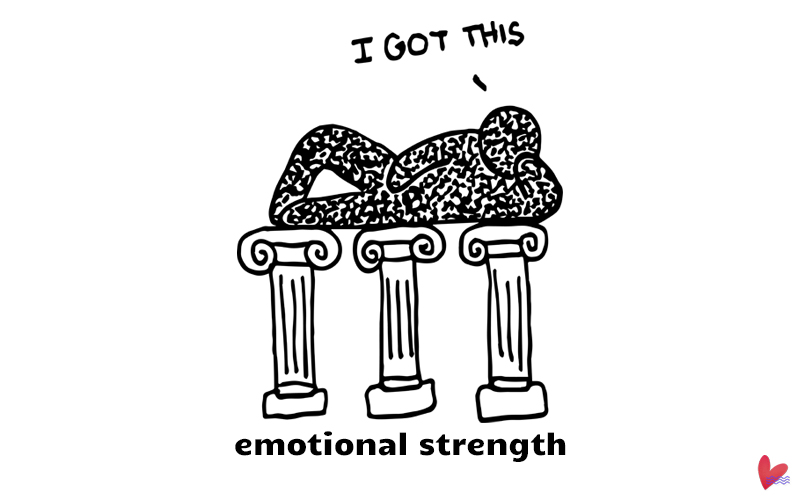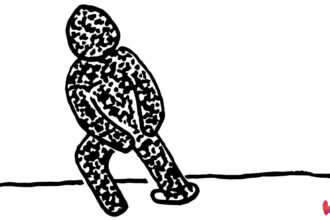3 Pillars of Emotional Strength for Creatives
We all have a unique set of challenges that we’re facing throughout 2020. With everything going on, staying emotionally strong is even more challenging than “normal” times. This is a friendly reminder that feeling drained, unmotivated, and completely uncertain is normal. The silver lining is that we’re all experiencing this together.
Emotional strength is not a one stop destination. It’s an ongoing journey. If you look at your challenges through a lens of optimism and an opportunity to grow, getting through this will be a little less difficult. Below are 3 pillars to staying emotionally strong.
Self-Awareness
The fact that you are reading this means you’re someone who values being self-aware or wants to be more self-aware. It takes the longest to cultivate, but it is the foundation of any emotionally strong individual. Being self-aware requires asking yourself hard questions, unpacking any trauma you have, and being brutally honest with yourself. It also requires being a little uncomfortable.
There are entire books on self-awareness. We won’t dive too deep here but I’ll leave you with this pro tip: check in on yourself often. Ask yourself questions like,
- “Am I enjoying the process?”
- “Do I still feel like this is the best path for me?”
- “What could I be doing differently to bring me more joy?”
The emotions that arise after asking these questions can be overwhelming. That’s ok, and this is why it takes time. If you need help answering these questions, seek out a therapist who can help.
It would be unproductive to ask these questions every day. Author, James Clear, does a yearly and bi-annual “integrity check.” Others may check in once a month, or whenever they feel blocked. The goal is to slowly start adapting a desire to check in and adapt.
Self-Compassion
We all have the capacity for compassion. It’s hardwired into our social DNA. But when we choose to exercise it can vary. Use self-compassion to be patient with yourself as you navigate tough situations.
Learn to recognize when you are feeling drained, blocked, angry, or overwhelmed. Keep note of your triggers, and when it happens, empathize with yourself.
A trigger for me is when I start to think of all the steps it takes to get to a goal, I tend to get emotionally overwhelmed. Before I recognized this, I would just stop and not do anything at all. Now I understand what feeling overwhelmed looks and feels like. When it starts happening I take a breath and remind myself that there will always be steps and it’s OK if I take my time.
Some other triggers may cause you to be too hard on yourself, take out frustration on others, or get into a down place. Do your best to question what causes these emotions to surface. This goes back to self-awareness. Self-compassion means you acknowledge that you are only human and you can only do so much.
A good life hack is to treat yourself like your friends and loved ones. If you have thoughts like, “I am a failure,” ask yourself if you say the same to someone you care about. If your friend was venting about feeling useless, you wouldn’t say, “Yea, you’re useless.” You would re-assure them that they are awesome and they will get through it. Do the same for yourself.
Resilience
The fear of failure is stressful to pretty much every creative, ever. Some of us never publish projects because our fear that it won’t be “successful” or people won’t receive it the way we intend.
Once we accept that things won’t always work out the way we want, the next step is to adopt a resilient mindset. This means being flexible and prepared.
Being flexible means that when failure or a roadblock occurs, you accept it and shift to another approach if needed. Being prepared means you know what the worst case scenario is and what the best case scenario is. It’s beneficial to still be prepared for success if it happens suddenly.
A resilient mindset means you accept that you can only do so much and that mistakes are inevitable. Instead of avoiding the pain of failure, with resilience you choose to face it head on. It is hard at first, and the more you face each roadblock with adaptability the easier it will become.
What’s Next?
It’s easy to read these pillars and think that it makes sense. But how do you integrate them into your life? The most important step is to Show Up. Start with genuine excitement to grow. That will lead to self-awareness naturally. The rest will follow.
Everyone has different ways of learning. These are the methods that worked for me:
- Asking myself tough questions
- Going to therapy to help answer those questions
- Reading about how to be more self-aware
- Being open and vulnerable with friends and family
These are all still methods I use. Start where you are, not where others are. Be honest and patient with yourself. Emotional strength takes time, and it’s an ongoing journey. You will never stop benefiting from the work.



